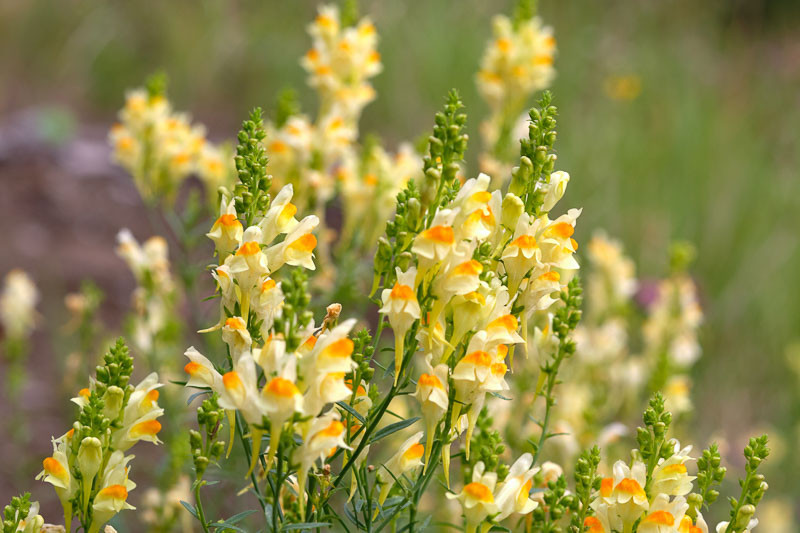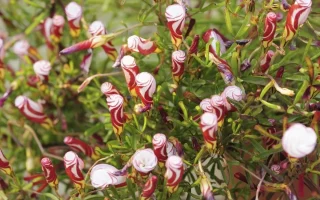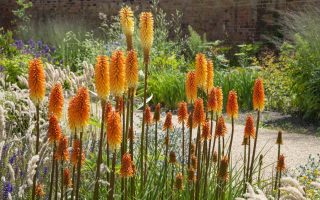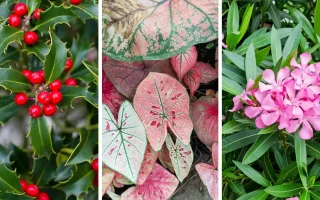iwillnotbebroken.org – Yellow Toadflax (Linaria vulgaris), also known as butter-and-eggs, is a perennial wildflower that boasts vibrant yellow flowers and a sprawling growth habit. Native to Europe and parts of Asia, Yellow Toadflax has become widespread in many parts of North America and other regions due to its adaptability and resilience. While it can brighten landscapes and meadows with its cheerful blooms, it is important to recognize that Yellow Toadflax is often considered an invasive species in some areas, outcompeting native plants and disrupting local ecosystems. Understanding its characteristics, growth habits, and ecological impact can help gardeners and land managers make informed decisions about cultivating or controlling this plant.
Appearance and Characteristics
Yellow Toadflax is a bushy, upright perennial plant that typically grows between 1 and 3 feet (30 to 90 cm) in height. The plant has narrow, lance-shaped leaves that are arranged alternately along its stem. The stems themselves are typically stiff and branching, creating a somewhat spindly appearance, especially as the plant matures.
The flowers of Yellow Toadflax are the main attraction of this plant. They are bright yellow, two-lipped, and resemble snapdragon flowers, with a lower lip that is often slightly curled upwards. The flowers grow in loose clusters at the tips of the plant’s stems and bloom from late spring to early autumn. The distinctive shape of the flowers and their vibrant color make Yellow Toadflax a standout in meadows, roadsides, and disturbed areas.
In addition to the flowers, Yellow Toadflax produces small, elongated seed capsules that contain numerous tiny seeds. These seeds are readily dispersed by the wind, helping the plant spread rapidly across a wide area. As a result, Yellow Toadflax is known for its ability to colonize new environments quickly, making it a potential issue for land management and conservation efforts.
Growing and Caring for Yellow Toadflax
Yellow Toadflax is a hardy plant that can thrive in a wide range of soil types and growing conditions. It is well-suited to disturbed areas, roadsides, and meadows, making it a common sight in urban, suburban, and rural environments. Below are some tips for growing and managing Yellow Toadflax:
- Light Requirements: Yellow Toadflax prefers full sun to partial shade. It grows best in areas that receive at least 6 hours of direct sunlight per day, although it can tolerate some shade in hotter climates. Full sun encourages the plant to flower profusely and grow vigorously.
- Soil: This plant is adaptable to a variety of soil types, including sandy, loamy, and clay soils. However, it thrives in well-drained, moderately fertile soils. Yellow Toadflax is drought-tolerant once established, but it does best in soils that retain moderate moisture.
- Watering: While Yellow Toadflax is drought-tolerant, it requires consistent moisture during its early growth stages. Once established, it can handle dry conditions but will perform better with regular watering during hot, dry periods. Overwatering should be avoided, as the plant prefers well-drained soil.
- Temperature and Humidity: Yellow Toadflax is hardy in USDA hardiness zones 3 through 9, making it suitable for a wide range of climates. It is tolerant of both cold and hot temperatures, although it prefers moderate humidity levels. In areas with extreme heat or humidity, the plant may benefit from some afternoon shade to prevent stress.
- Fertilization: Yellow Toadflax does not require heavy fertilization. In fact, it can thrive in poor soils, which is one reason it can often be found in disturbed environments. If growing in nutrient-deficient soils, applying a balanced fertilizer in the spring can help promote healthy growth and abundant flowers.
- Pruning: Yellow Toadflax does not require extensive pruning, but deadheading spent flowers can encourage more blooms and a tidier appearance. Cutting back the plant in late fall can help reduce its spread by removing seed heads before they have a chance to disperse.
Ecological Role and Invasive Nature
Yellow Toadflax has both positive and negative impacts on ecosystems, depending on where it is growing. In its native range, it plays an important role in attracting pollinators and supporting local biodiversity. However, in non-native regions, Yellow Toadflax is often considered an invasive species due to its ability to spread rapidly and outcompete native plants.
- Pollinator Support: Yellow Toadflax is attractive to a variety of pollinators, including bees, butterflies, and hummingbirds. Its bright yellow flowers provide nectar, making it a valuable food source during the spring and summer months when many other flowers are not in bloom. The plant’s role as a nectar source helps sustain local insect populations, which are crucial for pollinating other plants.
- Invasive Nature: One of the most significant ecological concerns surrounding Yellow Toadflax is its invasiveness. The plant can spread aggressively by seed, forming dense colonies that crowd out native vegetation. This ability to rapidly colonize disturbed areas, such as roadsides, fields, and waste sites, allows Yellow Toadflax to outcompete native species and disrupt the balance of local ecosystems. It is particularly problematic in regions where it has been introduced outside of its native range.
- Erosion Control: In some areas, Yellow Toadflax is used in erosion control projects, especially along roadsides and in disturbed areas where native vegetation has been damaged. The plant’s dense growth habit can help stabilize soil and reduce erosion, particularly in regions prone to flooding or heavy rainfall. However, its potential to spread uncontrollably in these areas can lead to unintended ecological consequences.
Pests and Problems
Yellow Toadflax is relatively pest-resistant, but it may occasionally face issues with certain insects and diseases. Some common pests include aphids, flea beetles, and caterpillars, which may feed on the plant’s leaves and stems. These pests can cause minor damage but rarely result in significant harm to the plant’s overall health.
The plant may also be susceptible to fungal diseases, such as powdery mildew, especially in humid conditions. To minimize the risk of disease, ensure proper spacing between plants to promote good air circulation and avoid overhead watering.
Controlling the Spread of Yellow Toadflax
For those wishing to control the spread of Yellow Toadflax, especially in regions where it is considered invasive, several management strategies can be employed:
- Manual Removal: Digging up the plants by hand and removing their roots can be effective in controlling small populations. It is important to remove the entire root system, as Yellow Toadflax can regenerate from remaining root fragments.
- Mowing and Cutting: Regular mowing or cutting back the plant before it can set seed can help reduce its spread. This can be particularly useful in areas where the plant is growing in dense clusters.
- Herbicide: In more severe cases, herbicides may be necessary to control the spread of Yellow Toadflax. It is important to use herbicides carefully, as they can affect non-target plants and animals in the area.
Conclusion
Yellow Toadflax is a resilient and vibrant wildflower that can be both a blessing and a curse, depending on the region. While it offers ecological benefits by attracting pollinators and stabilizing soil, its invasive tendencies make it a plant that requires careful management in non-native areas. Understanding the plant’s growth habits and ecological implications can help gardeners, landowners, and conservationists make informed decisions about how to cultivate or control Yellow Toadflax in their landscapes. Whether used for its beauty or managed for its invasiveness, Yellow Toadflax remains a fascinating and resilient plant with a significant role in the natural world.




